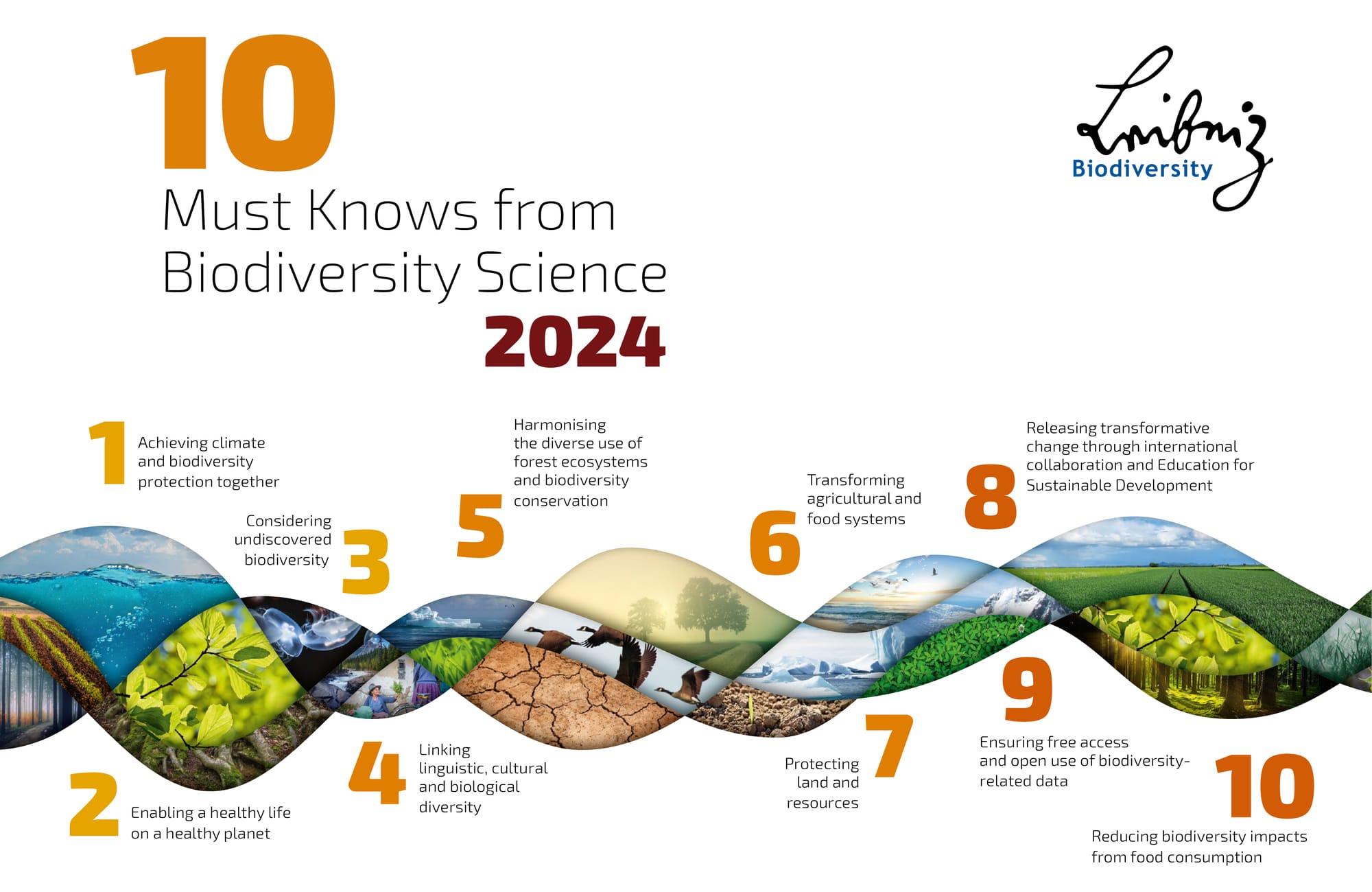How are climate and biodiversity protection connected? And why is it so important to think about and implement both together? How can we better protect the health of humans, animals and nature in their interdependence? How can we as Europeans contribute with our food, and farmers with their land management to ensure that everyone on our planet will still have enough to eat in 2050 without the soil being depleted by pesticides?
In the 10 Must Knows from Biodiversity Science 2024 from the Leibniz Research Network Biodiversity has analyzed scientific knowledge in ten key areas of the Earth-human system and provided concrete recommendations on how we as a society can contribute to a healthy life on a healthy planet.

Did you know, for example, that the consumption of animal products is responsible for 75% of land use and 77% of biodiversity loss? Switching to a fully vegan diet would reduce land use and biodiversity loss by around half and even just reducing meat consumption eating contributes to decreasing land use and the biodiversity footprint by around 20%. A bonus side effect is that a more plant-based diet also can make us healthier.
Reducing biodiversity impacts from food consumption
Did you know that farm animals such as cows, pigs and chickens make up almost twice as much biomass worldwide as humans (62% compared to 34%)? Only 4% of the biomass are wild mammals! This ratio unfortunately reduces the resilience that comes with biodiversity and increases the risk of infectious diseases such as Covid-19. We can do our bit through conscious dietary choices (by consuming less meat or none at all).
Enabling a healthy life on a healthy planet
Did you know that 91% of measures to protect biodiversity have a positive impact on the climate? The protection of old and diverse forests, for example, creates CO2 reservoirs that positively contribute to the climate. The rewetting of moors that have been drained in recent decades for agricultural land, among other things, also makes an important contribution. These are some of many other solutions that lead to climate protection through nature conservation.
Achieving climate and biodiversity protection together
You can find these and many other facts about biodiversity in the 10 Must Knows from Biodiversity Science 2024, which you can download here free of charge.
Feel free to write to our colleagues Dr Kirsten Thonicke and Eva Rahner from Leibniz Biodiversity to tell them which of the recommendations and tidbits of knowledge you particularly liked and which you might implement yourself straight away. You can also ask them questions, discuss or support them in their work. If you would like to continue to feed yourself with biodiversity knowledge, we warmly recommend the seasonal newsletter from Leibniz Biodiversity.